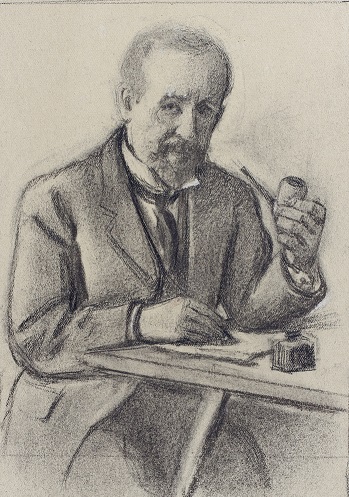
Henry Grant Plumb: An American Artist Rediscovered
Trove of art and archives purchased at Allentown Paper Show
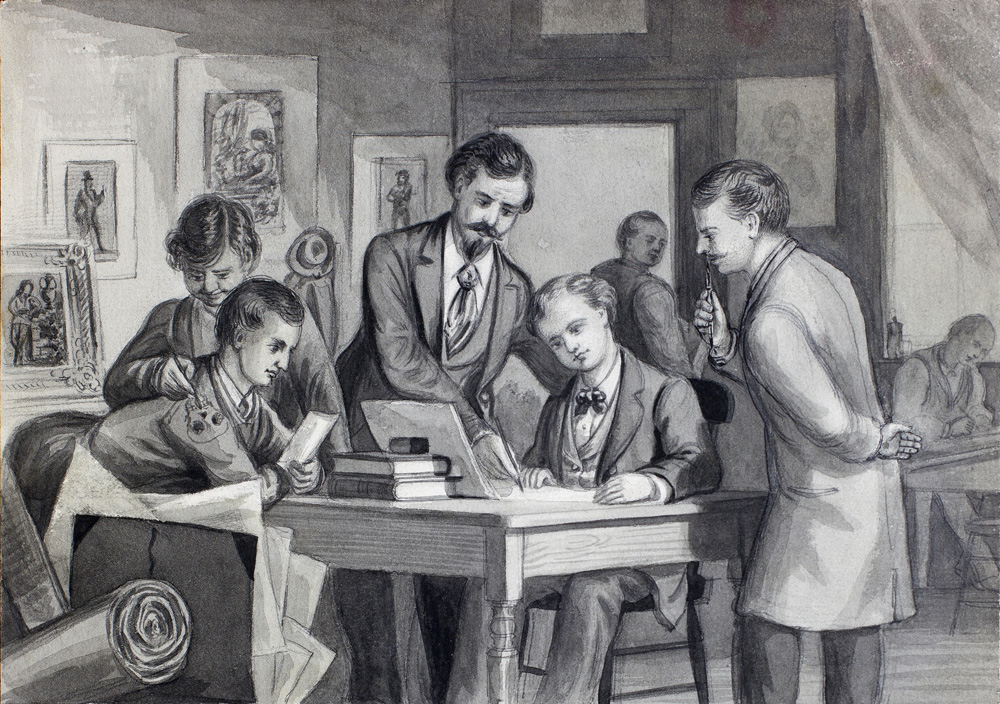
Paris art students, gouache on paper, mid-1870s
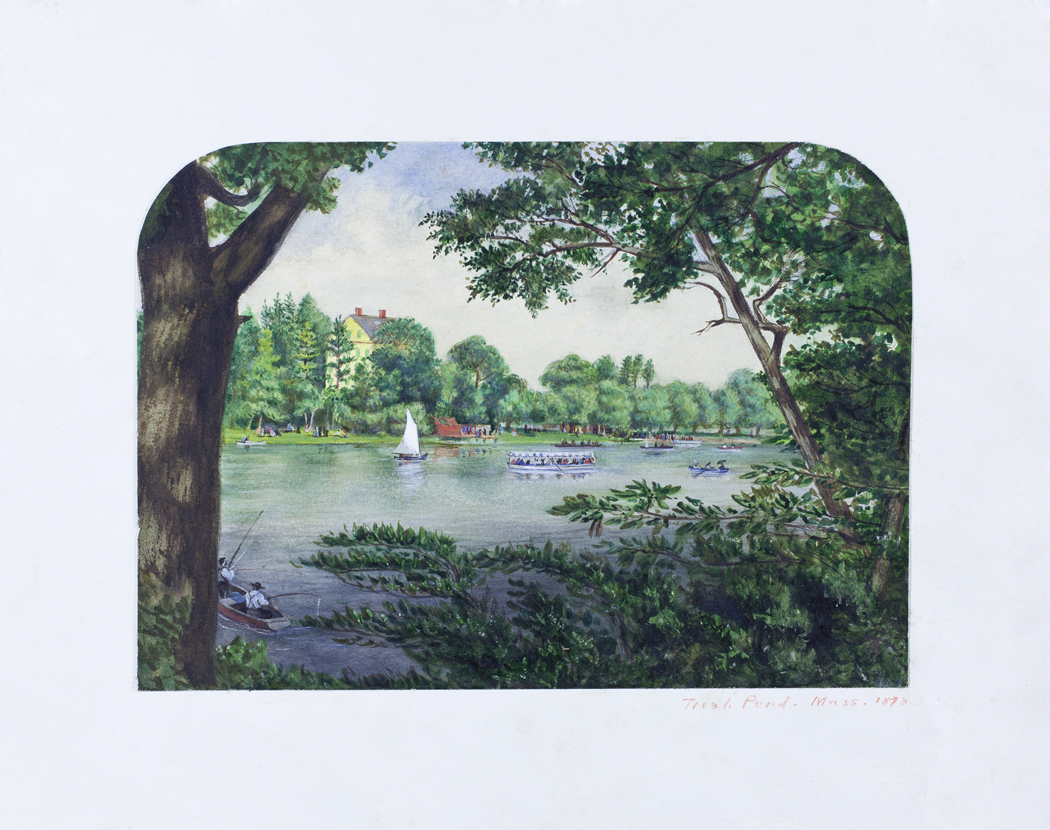
Boston rowing scene, gouache on paper, ca 1872-74

Haying time, Sherburne, NY, oil/canvas, ca. 1880s-90s

Coming Thro the Rye, 1882, chromolithograph
after original watercolor
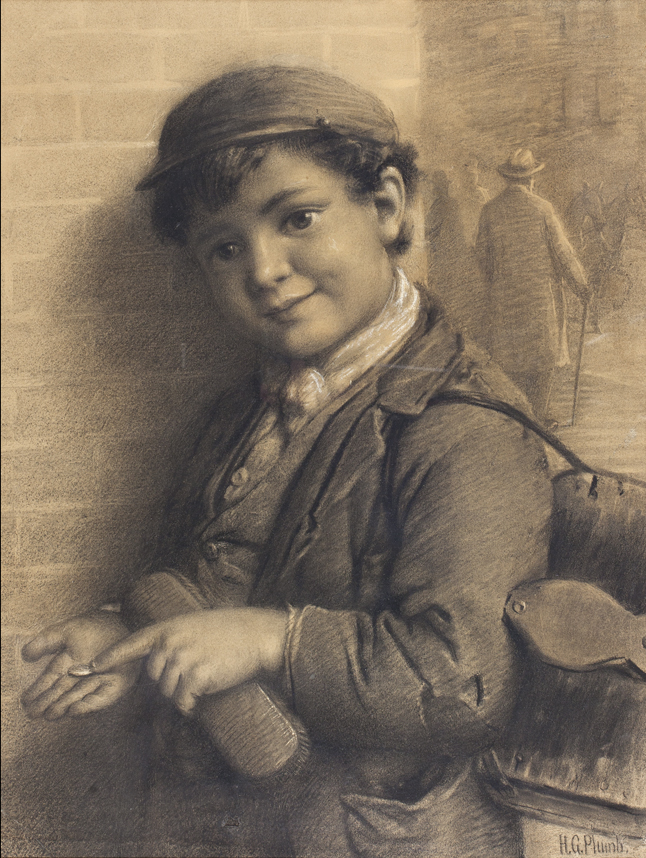
A Shining Example, pencil on paper, 1883
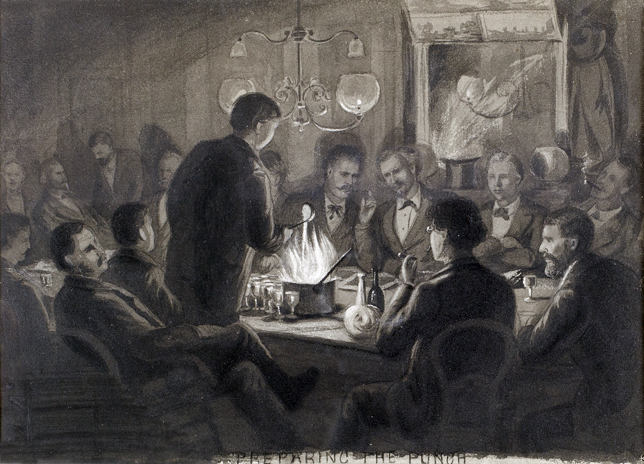
Preparing the Punch, Latin Quarter Sketch Club, mid-1870s, gouache/paper
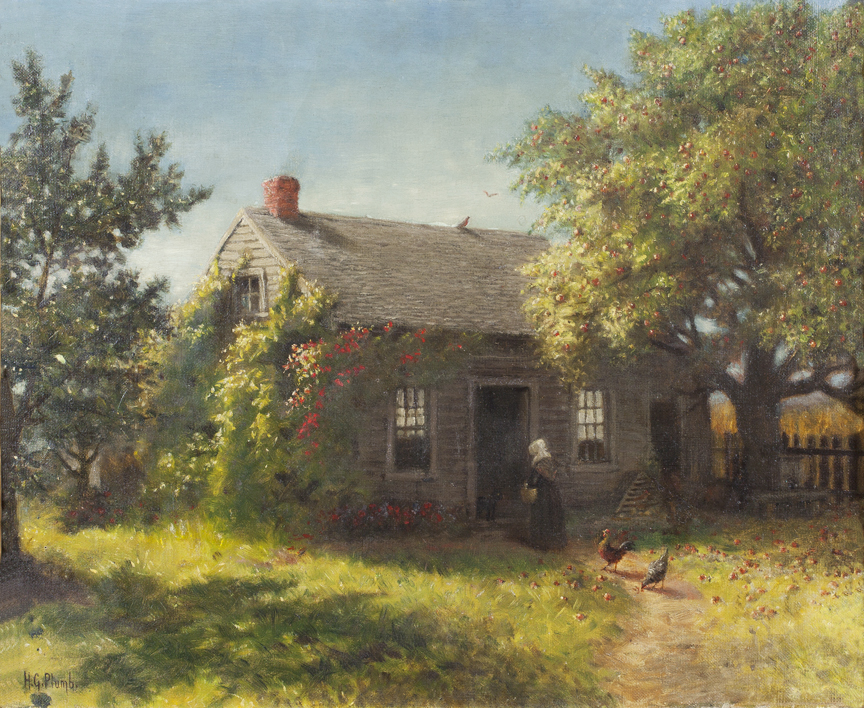
Cottage in Pont-Aven, France, mid-1870s, oil on canvas
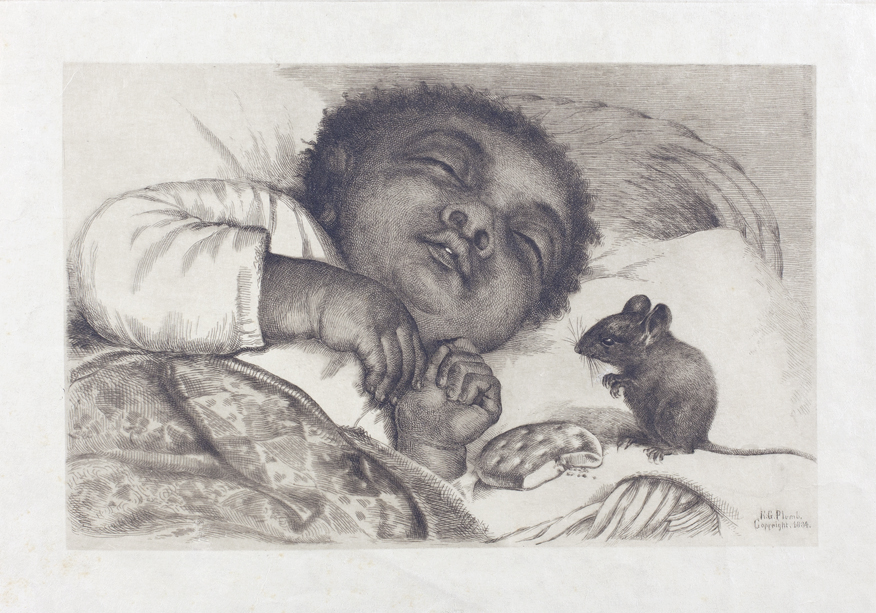
The Pickaninny, ca. 1882, engraving
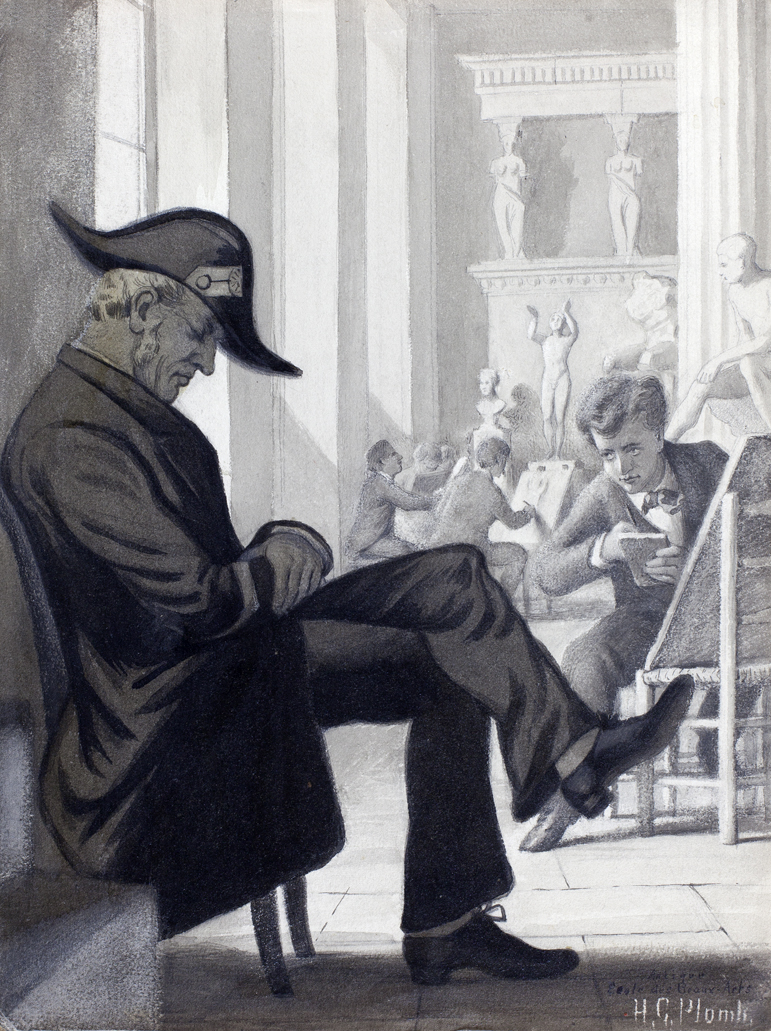
Cast room, Ecole des Beaux-Arts, mid-1870s, gouache/paper
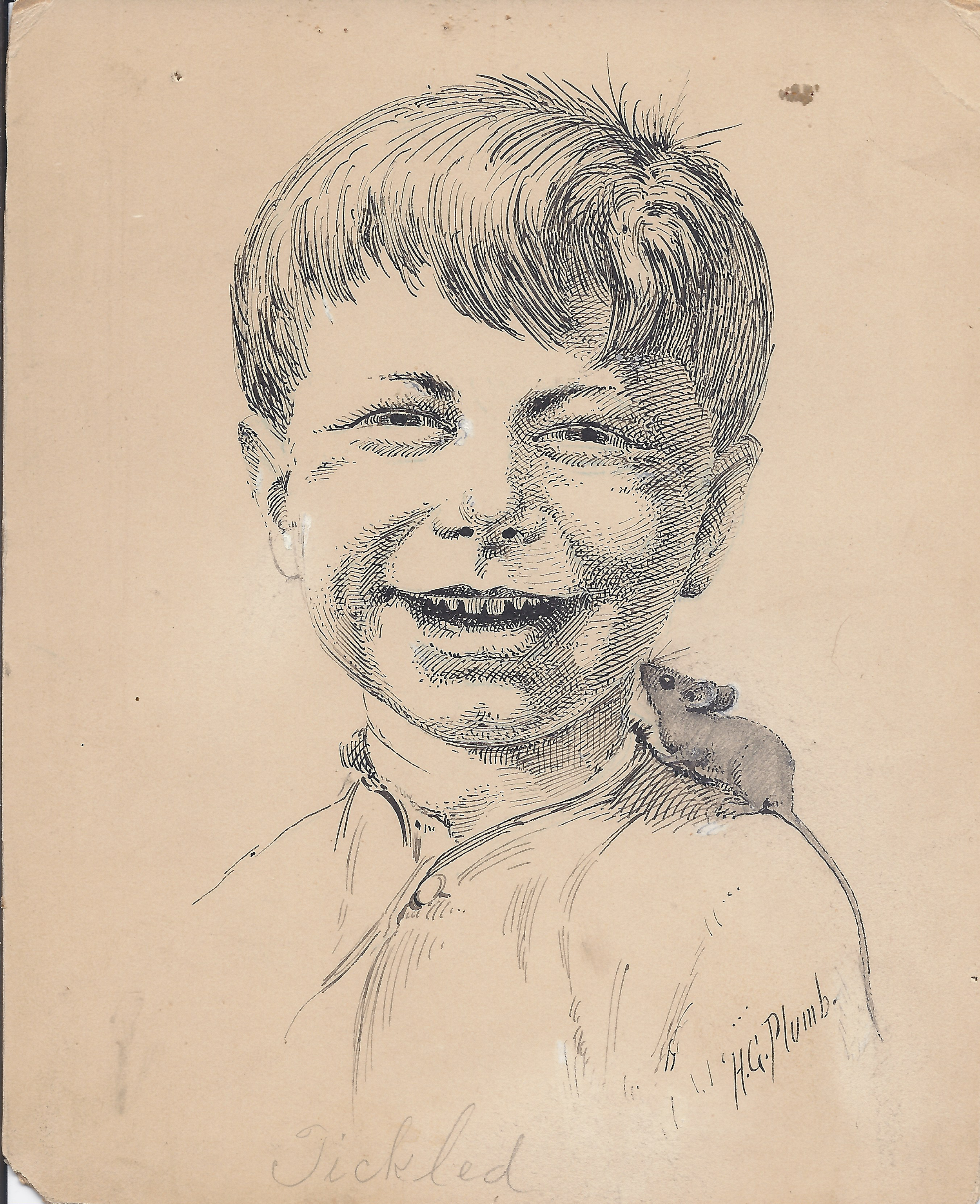
Tickled, pencil on paper, published in The American Illustrator
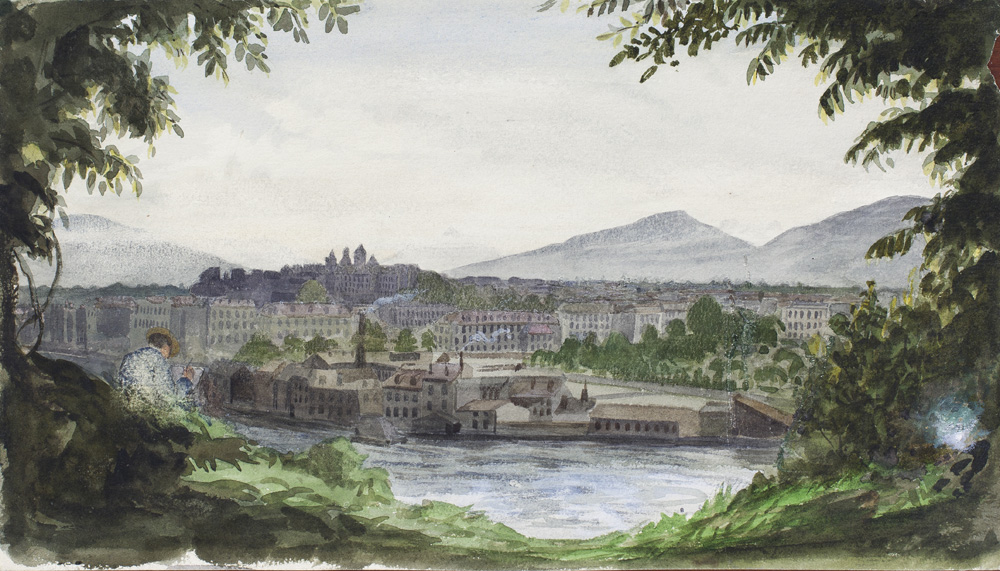
The artist sketching in Verona, Italy, 1875, gouache/paper

Untitled, watercolor/paper, ca 1880s

Plumb’s letter to his family, 4/12/1875, showing classroom at the Ecole des Beaux-Arts, Paris
In April 2014, as was my habit I attended the Great Eastern Paper Show at the Allentown, PA fairgrounds. Although short of money, I left that evening having committed to purchasing a large trove of art and archival material from the estate of the artist Henry Grant Plumb (1847-1930). Since then I have published a major article on the find, which was picked up by Eve Kahn, long-time antiques columnist for the New York Times. (Thank you Eve for the fabulous coverage!) In January 2016 I lectured on Plumb and my find at the National Arts Club in New York City. One adventure has led to another and there's a strong connection to the prominent American genre painter Tompkins H. Matteson (1813-1884). as both artists were from the tiny but magical town of Sherburne, NY, and Plumb's father Isaac and Matteson were close associates. Here's his bio:
The artist and teacher Henry Grant Plumb was born in Sherburne, New York, located in a rural and beautiful area of central New York State whose economy was devoted to agriculture and transportation by the Chenango Canal and a railroad (both now defunct). A small town with a population of around 2,000, Henry’s parents Isaac and Catherine Grant Plumb were prosperous and leading citizens of the town and surrounding Chenango County. Isaac owned a business devoted to furniture, picture frames, and undertaking and served for many years in prominent positions in town and county government, even holding office in Albany as a state representative for one term. Henry’s love for art was manifested at a young age as a group of small drawings confidently signed and dated bear testimony.
His family was extremely close and supportive of his artistic tendencies especially since his father was a chair maker by trade and an amateur musician. Henry was the youngest of three children; his eldest sibling, Isaac, Jr., was a Civil War hero who served with Colonel Nelson Miles and General Francis Barlow, rising rapidly from private to captain in his three years of service, finally losing his life on July 4, 1864 in a Washington, DC hospital. Henry’s immediate elder, a sister named Anna, was a pianist who married a Sherburne boy who became a successful merchant in the boot and shoe trade
Formative in Henry’s early years was the family friendship with genre artist Tompkins H. Matteson (1813-1884), a Sherburne resident who was nationally known for his historical and literary paintings. Matteson and Isaac Plumb were closely allied in town politics and community service, actively organizing and serving in leadership positions with the fire company, water board, school board, and local government. Matteson also served in Albany as a state representative for one term. Although we do not yet know if Matteson gave Plumb lessons, and Matteson is not mentioned in Plumb’s biographical listings, we do know that Matteson offered art lessons in his studio and works by Henry show his influence in depicting multiple figures engaged in rural pursuits such as ice skating, hunting, and hop picking. Moreover, Matteson painted the three Plumb children’s portraits.
In 1864, Henry Plumb moved to New York City, becoming an apprentice in the engraving and lithography trade. Starting as an errand boy, he rapidly rose to become an artist in Hatch & Co, one of the country’s leading firms. Concurrently, he studied art first with sculptor Ernst Plassmann, then at the new Cooper Union Free Night School of Science and Art, and lastly at the National Academy of Design. In 1872, he was hired away from Hatch & Co. by the Boston engraving and lithography firm of J. H. Bufford & Co,, where Winslow Homer had begun his career in the mid-1850s.
In September 1874, Henry embarked on the adventure of a lifetime, voyaging to Paris by way of London, and enrolling in the world-famous Ecole des Beaux-Arts to study drawing and painting. His parents paid most if not all of his expenses for four years, a remarkably supportive arrangement for that time. At the Ecole, his teachers were the internationally-famous Orientalist painter Jean-Léon Gérôme and the military painter Adolph Yvon. He succeeded in the infamous Concours des Places, a multi-day examination given to students who aspired to enter Yvon’s evening drawing class. Only one in three aspirants were successful and many more famous American artists were not successful and hence pursued studies at alternative art schools in Paris. Plumb also studied in the independent atelier of Carolus Duran, John Singer Sargent’s mentor. His illustrated letters of this period narrate and depict his experiences and adventures in the classroom, city neighborhoods, and the French countryside, a remarkable rediscovery. Written accounts by American artists including Will H. Low and Abbott Thayer are known, but Plumb’s are the first extensively illustrated letters by an American artist to be found. His letters enable us to ascertain the artist’s humor, resilience, sense of adventure, and warmth toward his fellow man. Among his friends were the better-known American artists Abbott H. Thayer and J. Scott Hartley. Plumb travelled during the summers to the art colonies at Pont-Aven and Moret-sur-Loing, with an extended trip through Switzerland to Italy, to view the art and architectural masterpieces of that country. The latter trip he recorded in illustrated letters, watercolors, and three pocket sketchbook.
Returning home late in 1878, Plumb established a successful career in New York City, serving as a drawing teacher at Cooper Union for many years while maintaining an active schedule of painting, drawing, and exhibiting, both in New York City and throughout the Northeast United States. Venues included the prestigious National Academy of Design, Pennsylvania Academy of the Fine Arts, and the American Watercolor Society. Prominent patrons including Thomas B. Clarke and members of the Havemeyer and Mellon families purchased his art from these exhibitions. Plumb joined the well-known Salmagundi Club and actively participated in their social and artistic events, during fifty years of membership. His art included watercolors, oils, drawings, and prints with a wide range of themes. Photographs of his work tell us that he essayed with equal vigor and competence portraiture, landscape, animal, and genre scenes. He had a playful sense of humor and enjoyed depicting cats, mice, and farm animals in charming, often funny predicaments. Some of his art was probably done with commercial purposes in mind, after all it was the so-called Golden Age of Illustration. Plumb’s two children with his wife Mary Witte, Margaret and Henry, Jr., were often the subjects for his art. Plumb returned each summer to Sherburne, setting up his studio in the barn behind the Plumb homestead and painting the rural subjects surrounding him as well as portraits of friends and family in the area. Henry Grant Plumb was healthy and active until close to the end of his life, which was marked by obituaries in the New York Times and the New-York Tribune.
